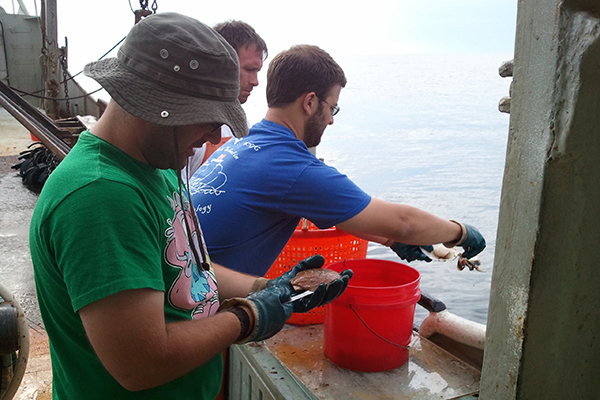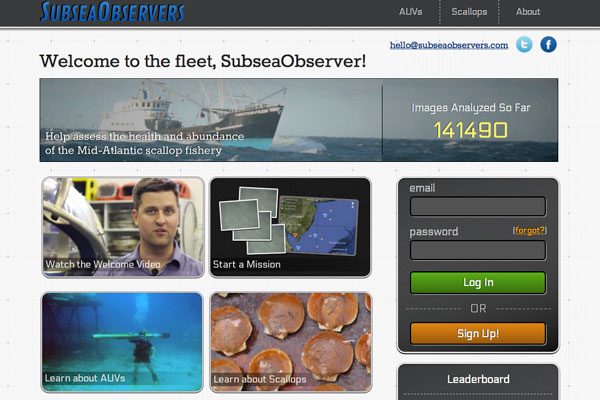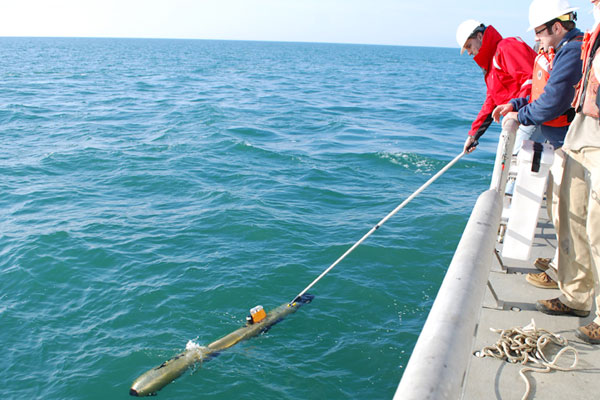Citizen science
Volunteers analyze images in crowdsourced scallop research project
8:54 a.m., March 28, 2013--They have looked at 140,000 images, identified 42,000 scallops on the bottom of the ocean and donated countless hours of their time — and the scientists that they are assisting don’t even know who they are.
Anonymous volunteers with SubseaObservers.com are helping assess sea scallop populations in the Mid-Atlantic as part of a citizen science project organized by UD researchers.
Research Stories
Chronic wounds
Prof. Heck's legacy
“It’s better than I expected,” said UD geological sciences graduate student Justin Walker about participation at the website, which launched in October.
Walker and Arthur Trembanis, associate professor of geological sciences and oceanography in the College of Earth, Ocean, and Environment, posted thousands of photos online that show the seafloor off the coasts of Delaware, New Jersey and New York with the help of developer Nick Wilkinson of Modernscience.net. They used a torpedo-shaped robot, called an autonomous underwater vehicle (AUV), equipped with a camera to collect the photos.
The researchers recruited volunteers through citizen science sites like Scientific American and scistarter.com to look at images one by one and use a customized program to point out sea scallops. The totals inform estimates of scallop health and abundance, and also provide information on other species such as sea stars, sponges, skates and lobsters.
Several hundred public users have reviewed 75 percent of the photos so far, averaging about 920 per day. The majority are Americans, but 15 percent are from the Philippines and the remaining 17 percent are from Canada, France, Great Britain and other countries. Their collective effort amounts to roughly a year’s worth of work if it were to be done by one individual, and a few dedicated people account for a full third of the images analyzed.
“I appreciate the heck out of the people who have done 5,000 missions,” Trembanis said. “I don’t know where they get the time.”
Citizen science has a long tradition in the field of astronomy, where lay people have made new discoveries and contribute their brainpower through sites like Zooniverse to study sun explosions and the weather on Mars. Applications in marine science are relatively new, Trembanis said, as researchers explore suitable tasks for working with ocean data.
A distinguishing aspect of SubseaObservers is that the data has been analyzed both by a science team and the public. The researchers wanted to know whether citizen scientists would be as accurate as trained graduate and undergraduate students who knew the differences between a scallop and sand dollar, for example.
The citizen scientists took an online training session before they began, and in general, their accuracy is just as good as that of the science team. Those who are consistently off must re-take the training before they continue to maintain quality control.
The potential moving forward is that the science team may only need to review half of the images to ensure accuracy, freeing up their time for other tasks.
The researchers are also roping in another helper: computers. They are working with Herbert Tanner, associate professor of mechanical engineering, on an automated scallop detection system that uses artificial vision to determine whether or not scallops are within a photo. The tool could help weed out the many photos that contain no scallops at all, and then pass off the remaining images to human identifiers — which are still the best.
Overall, the new approach could improve scallop surveys conducted by regulators to set fishing limits for commercial scallopers. Traditional surveys use dredges to scrape scallops off the seafloor from limited areas, and others use towed cameras that collect millions of images of which only a portion are reviewed and counted manually.
Now that Trembanis’ site has been established, the database and design could be repurposed for other projects once the scallop survey wraps up later this year. For example, it could be used for other fishery assessments or look for invasive species. Other uses in marine science could be re-analyzing previously gathered data collected for other projects — say, looking for polar bears in satellite images collected to look at sea ice.
“The groundwork has been laid,” Walker said.
Article by Teresa Messmore
Photos courtesy of Justin Walker and by Teresa Messmore













